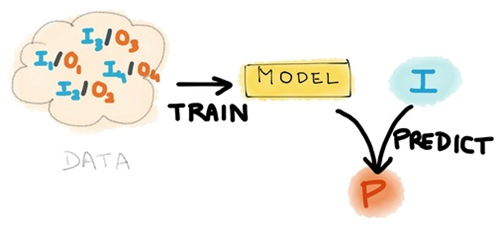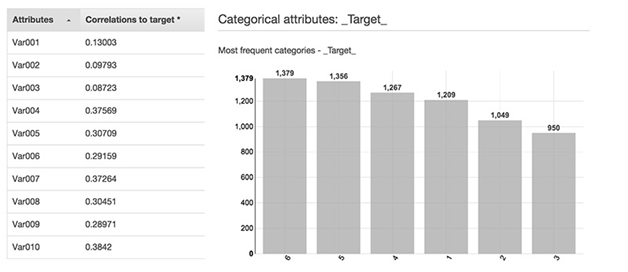On March 10, 2017, Google announced its acquisitions with Kaggle- the largest community of data scientists and machine learning enthusiastic people. Google wanted to continue its support and research for more machine learning applications. Thus the invention of Prediction API has taken place in the section of Google Cloud APIs.
Machine learning is now entering into the area of human sentiments when it comes to the use of the mobile application and web applications. How can a company determine the customer experiences without a human intervention? I strongly believe that machine learning APIs will change the analysis pattern of the web application usage.

Google cloud API in Machine learning as a service (MLAAS) has opened the door for the automated customer experience analysis.
Walker has researched and then revealed -By 2020, customer experience will be the key brand factor for the marketing then pricing and a product. Every customer would ask for personalised experience and demand strongly for that because competition would be ready to cater that need.
Up till now, Google and other tech giant used to provide sentiments analysis and the companies used to utilise those facts to determine marketing strategies. Now Google, Amazon and some other tech giants have started empowering the e-commerce with the APIs which helps in judging customer sentiments in terms of reviews, rating, tweets, emails, feedbacks and other stuff.
Why Google Prediction Analysis API?
As we have noticed the urge of having an automated user experience analysis in order to offer better services. The Google cloud API works two ways
- Based on examples and training data, it provides the predicted numeric value for one particular item which is not available in the system.
- It provides the best category for the given item and this category would describe the item at its best.
Google Cloud Prediction API arrives with extensive automated features which will ease the decision making for the changing markets.
Let’s look at what it offers-

Source: kdnuggets
Smart auto fill spreadsheet
It is an add-on in the Google spreadsheet for performing machine learning. Google has provided a beautiful example to understand the add-on. Suppose, a medical shop owner has an inventory of all types of medicines available. The spreadsheet includes all these in one and if some medicines’ prices are not recoverable, then shop owner would use this auto fill feature and it will actually auto fill the data based on the similar data available.
Sentiment Analysis
It uses a sentiment analysis model. This model analyses a text string and according to the labels provided, it will classify that string. A tweet can be given to the model and according to a given label like ‘positive/negative’, it will tell that a particular tweet is positive or negative. Same way, an email, a post, etc. can also be given for analysis and labels can also be changed to happy, frustrated, sad etc.
A developer has to create a model for that. This model can be developed in various stages like collecting data, labeling data, preparing data, uploading data to Google cloud and finally training a model with Google Prediction API.
This feature is related to the prediction of customer choices for various products. For example, a website offers cards, soft toys, and wind champs. A site would be interested in customer’s purchase analysis. So the training data can be prepared like this-
- A number of times customer ordered only card, only soft toy or a wind champ.
- A number when a customer has ordered a soft toy followed by a purchase of a card.
- Combination of cards and wind champs
- Customers who ordered all three at the same time
So all combinations and permutations are carried out and uploaded as a model. It is a one-time task only and then whole business can be governed depending on the customer purchase preferences only.
Spam Comment Detection
This feature is really useful for SEO when want to know the authenticity of a text. For example, to know the status of comments in terms of they are fake or not, it helps. It is same like the spam email detection which Google and other email servers use. Only things to do is to configure some signals and facts.
Amazon Machine Learning (ML) is also giving the tough competition with Google Cloud API
Amazon ML is invented from highly scalable machine language technology by Amazon’s internal community of data scientists. It finds patterns in the existing data and creates machine language models by using powerful algorithms.Then it uses this ML model to process newly arrived data and provides predictions based on the website or mobile applications.The following image shows the Amazon’s correlation between targets and existing data.

Image:cloudacademy
Let’s check out at what Amazon ML offers-
- It takes user’s activities for a particular time period and then gives predictions like the given user would become a customer or not.
- It checks website’s activity records and provides fake users and spammers of the system.
- It takes the music file and based on its signal levels, it can provide categories like rock, jazz, blue, metal etc.
- It recognises a character from any picture.
- By accelerometer and gyroscope signals, it can recognise mobile device movements.
Summary,
Every API can be measured by the time it takes and prediction accuracy of the model. Google prediction API is simple and straight. With the awareness of data and model creation, one can get started with its SDK in any language. It comes with good examples as well. Whereas Amazon ML wants you to understand with Amazon perspective which can take longer to learn. But it would come out as worthy efforts.